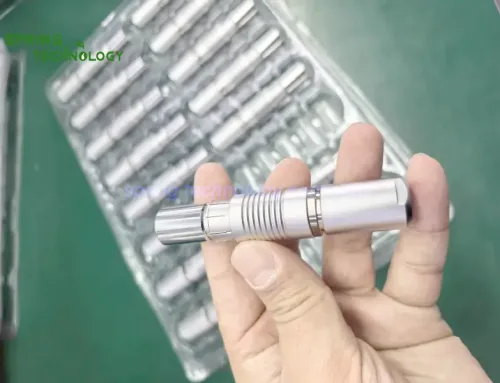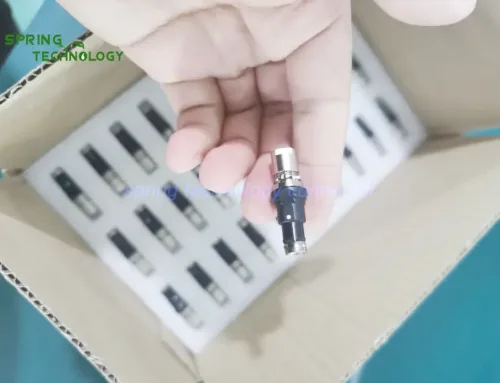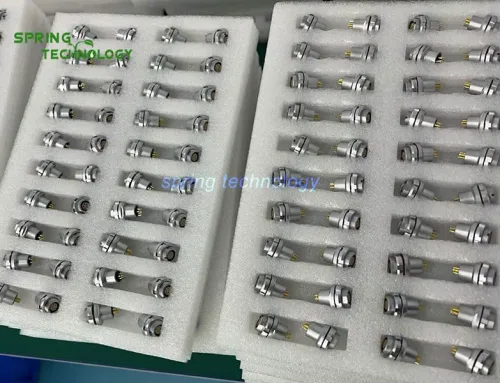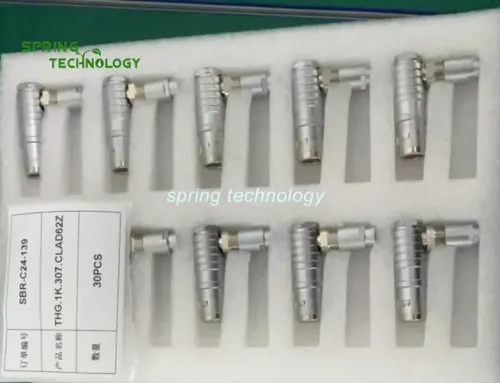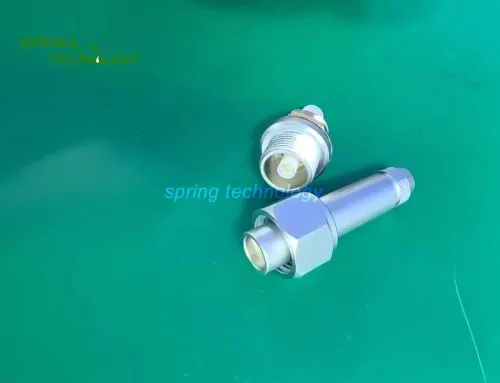Spring Technology GNSS Receiver Push-pull Connectors ZCG.0B.302.CLV and ZCG.0B.305.CLV
GNSS receiver push-pull connectors are advanced connection solutions designed for fast, secure, and high-performance integration in satellite navigation systems. These connectors ensure stable signal transmission between GNSS antennas and receivers while providing the convenience of quick locking and easy disconnection. With their robust design and reliable performance, push-pull connectors are widely used in surveying instruments, aerospace, automotive navigation, and industrial IoT devices. This article highlights their features, benefits, applications, and selection guidelines.
The customer in UK used ur 2 and 5 position circular connector receptacle ZCG.0B.302.CLV and ZCG.0B.305.CLV for their high-precision GNSS receiver.They can deliver stable power supply and seamless data transfer (COM1/COM3 ports).
What Are GNSS Receiver Push-pull Connectors?
GNSS (Global Navigation Satellite System) receiver push-pull connectors are specialized RF connectors that use a push-to-lock and pull-to-release mechanism. Unlike threaded or bayonet connectors, they allow quick connection without tools while maintaining strong mechanical stability. Since GNSS signals are extremely weak upon reaching Earth, the quality of the connector directly influences positioning accuracy, signal integrity, and overall system performance.
Key Features of GNSS Receiver Push-pull Connectors
- Quick and Secure Locking
- Push to engage and pull to release, ensuring speed and simplicity in field operations.
- Reduces downtime in applications where equipment is frequently connected or disconnected.
- High Signal Integrity
- Designed to support multi-band GNSS frequencies (L1, L2, L5).
- Low insertion loss and proper 50-ohm impedance matching to preserve weak GNSS signals.
- Durability and Ruggedness
- Resistant to vibration, shock, and harsh environmental conditions.
- Available with IP67/IP68 sealing for outdoor or industrial environments.
- Compact and Lightweight Design
- Saves space in portable GNSS equipment such as surveying instruments and UAV systems.
- Reduces device weight while maintaining robust connectivity.
- Long Lifespan
- Engineered for thousands of mating cycles, ideal for repeated field use.
Applications of GNSS Receiver Push-pull Connectors
- Surveying and Mapping – High-precision land survey equipment and geospatial instruments.
- Aerospace and Defense – Avionics, drones, and military-grade GNSS systems.
- Automotive and Telematics – Fleet tracking, navigation, and ADAS (Advanced Driver Assistance Systems).
- Industrial IoT – Smart sensors, asset tracking, and autonomous machines.
- Marine Navigation – Reliable GNSS connectivity in harsh offshore conditions.
How to Choose the Right GNSS Push-pull Connector
- Frequency Compatibility: Ensure the connector supports the GNSS bands you require (L1, L2, L5, multi-band).
- Environmental Resistance: For outdoor use, select IP-rated connectors resistant to dust, water, and corrosion.
- Mechanical Strength: Verify vibration and shock resistance for mobile or aerospace applications.
- Size and Weight: Opt for compact connectors when integrating with lightweight or portable GNSS devices.
- Mating Cycle Rating: Choose connectors designed for long-term, repeated use in field environments.
Conclusion
GNSS receiver push-pull connectors combine reliability, speed, and durability, making them a preferred choice for modern navigation systems. Their quick-locking design ensures efficient field operations, while their robust construction guarantees signal integrity across industries. Whether in surveying, aerospace, automotive, or IoT applications, these connectors provide the secure and efficient connectivity needed for high-accuracy GNSS performance.
FAQ
Q1: Why use push-pull connectors in GNSS receivers?
They provide secure, tool-free connections while preserving signal integrity, making them ideal for precision navigation systems.
Q2: Are push-pull connectors suitable for outdoor GNSS equipment?
Yes. Many push-pull connectors come with IP67/IP68 protection, ensuring reliability in harsh environments.
Q3: Can push-pull connectors support multi-frequency GNSS?
Yes, they are designed to handle multi-band GNSS frequencies such as L1, L2, and L5.
Q4: How durable are GNSS push-pull connectors?
They are engineered for thousands of mating cycles and resist vibration, shock, dust, and moisture.
Q5: In which industries are GNSS push-pull connectors commonly used?
They are widely used in surveying, aerospace, automotive telematics, IoT, and marine navigation.
Spring Technology B Series Push-pull Self-latching Circular Connectors offers a modular, ergonomic, rugged and reliable circular multipole connector for applications needing quick and secure Push-Pull latching. Making it an ideal choice for Medical, Test & Measurement, Research, Communications, Broadcast Connector, Machines, Defense, Robotic, Aerospace, public sector, Information Systems, Motorsport, Miscellaneous applications. The modular insert configurations include a wide range of high-density multi-pole contacts. Contacts can be of solder type, PCB straight or PCB elbow type of contact.
- security of the Push-Pull self-latching system
- multipole types 2-26 contacts
- solder, print contacts (straight or elbow)
- high packing density for space savings
- multiple key options to avoid cross mating of similar connectors
- keying system («G» key standard) for connector alignment
- 360° screening for full EMC shielding.
Xi’an spring technology Co., Ltd. is a professional push pull connector manufacturer integrating connector research and development, production and sales. Contact me for more info and best price.
Visit our website: https://www.spring-connectors.com/

